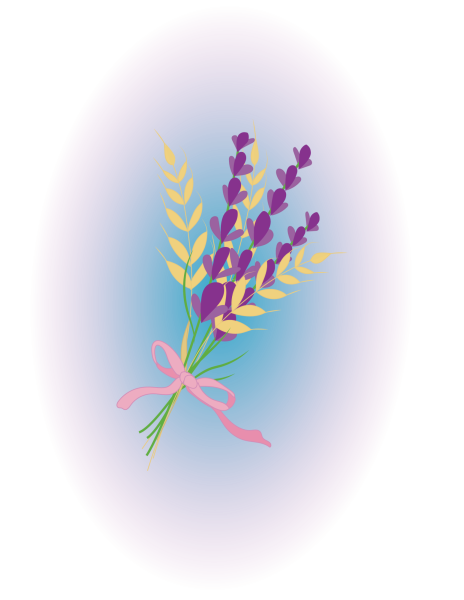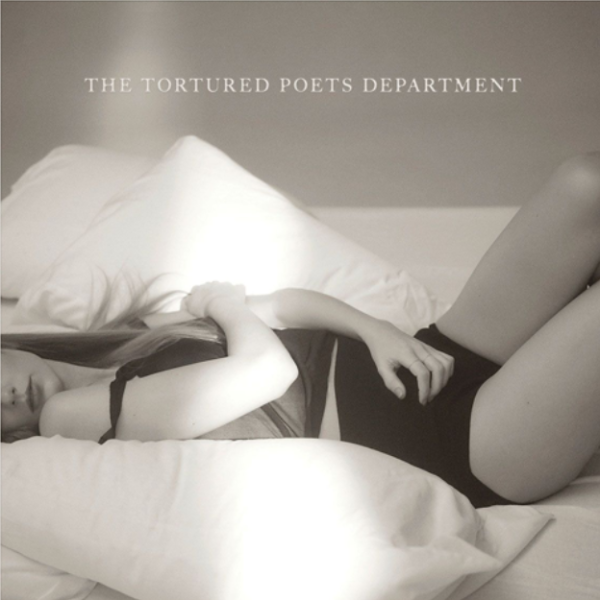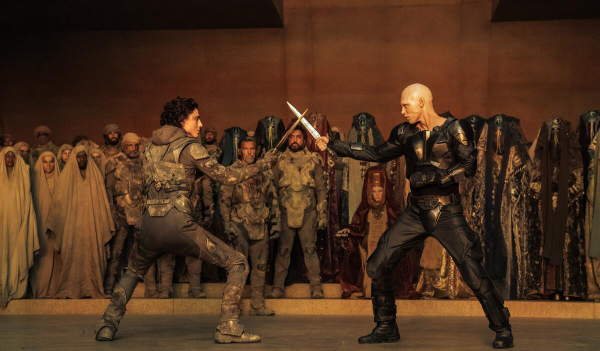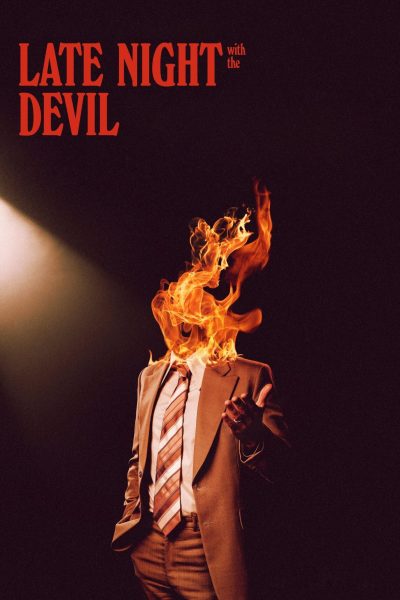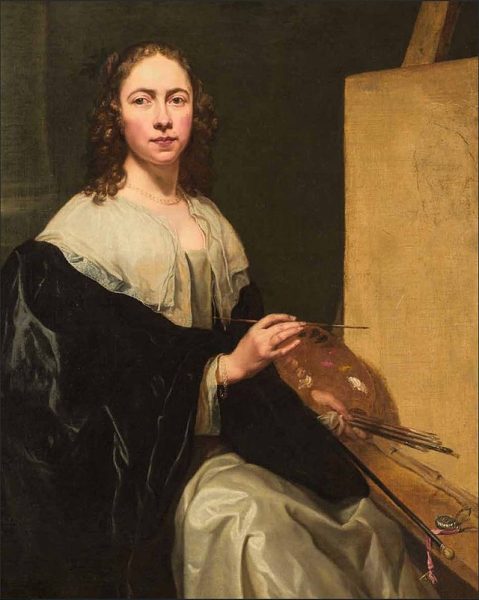“Cuentos Nuevomexicanos” Draws the Line Between Tradition and Contemporary Artwork
On Sunday, March 19, MOCRA, Saint Louis University’s Museum of Contemporary Religious Art, unveiled its spring exhibit entitled “Cuentos Nuevomexicanos,” the Stories of New Mexico. The two artists behind this exhibition are Vicente Telles and Brandon Maldonado, both of whom were raised in New Mexico. The display consists of 23 works that range from self-portraits using oil on canvas to religious symbols carved in basswood.
To be exact, the religious symbols depicted are “Santos,” or “saints.” The celebration and use of Santos is a vast tradition that has lasted for over 200 years in Hispanic cultures, specifically originating in Spain. Santos are often used in paintings as imagery for religious devotion, often helping people in prayer to the specific saints depicted. Of course, this tradition continued through Catholicism and colonialism to territories under Spanish rule. Since then, New Mexican “Santeros” (makers of Santos) took the tradition, making it something of its own when mixed with new cultural ideas.
Vicente Telles is a Santero and a proponent of the Santos tradition. He harkens back to the traditional Santos in many ways, including his use of tablets, self-made pigments, and interpretations of well-known Catholic images. He uses this iconography in his more contemporary works, where his art includes social commentaries with a primary focus on Mexican culture, including the Mexico-US border crisis. As an artist, Telles takes it upon himself to work as a communicator and teacher of the Santos tradition in our modern world.
One of Telles’ works that best represents the line that he rides between the Santos tradition and his own style is titled “Mother Son.” This piece is a wooden structure carved from basswood, painted with foraged and commercial watercolor pigments. On the left side, there is a depiction of Saint Mary holding an infant Jesus. On the right, a depiction of the risen Christ collecting blood in a chalice, possibly for communion.
“The piece alludes to the duality of life and death, of feeding and being fed,” Telles said.
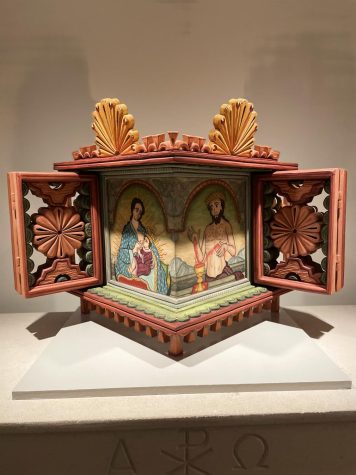
Brandon Maldonado’s work in the exhibit mainly uses a contemporary eye. The multicultural environment of New Mexico left a permanent imprint on Brandon Maldonado’s work, which frequently explores themes associated with Mexican culture. These two elements combined lead to a more modern way of storytelling through his artwork. Upon being asked his goal for curating his works for “Cuentos Nuevomexicanos,” Maldonado says that he wanted to share and express this culture.
“St. Louis is quite a distance away from New Mexico,” Maldonado said. “I wanted to put together a body of work that would share the story of this 200-year-old uniquely New Mexican Saint-maker art form both visually and thematically through sharing the unique cultural aspects of the New Mexican land.”
When Maldonado was asked which work is his favorite, he said there was importance within both works, though one did gain a stronger reaction.
“I don’t pick favorites,… the image I have depicting the Sangre de Cristo (Blood of Christ) mountain range has gotten a strong personal reaction from many people who grew up in the region,” Maldonado said.
The art piece was created using oil and acrylic on a panel. It depicts a surrealist image of the fallen Christ morphed into a mountain range. It was inspired by the southern stretch of the Rocky Mountains named Sangre de Cristo by the people of Northern New Mexico.
“Seeing a literal and surreal image of the mountain range of their homeland seemed to strike a chord with them. So I’m particularly proud of that one,” Maldonado said.
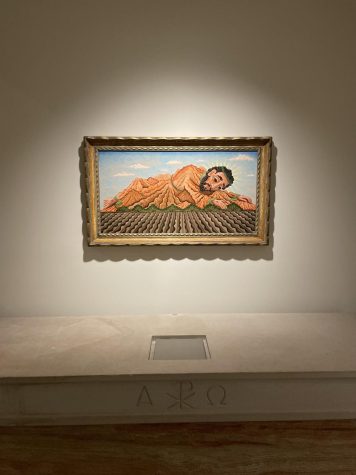
The exhibition will be on display until May 21, 2023. If a free moment is found amid final exams and late-night study sessions, hopefully inspiration is found to visit “Cuentos Nuevomexicanos.” Not only is the exhibit an excellent showcase of artistic ability, it is also an opportunity to learn about New Mexico and its culture.
Your donation will support the student journalists of Saint Louis University. Your contribution will help us cover our annual website hosting costs.



![The Teskey Brothers [Crew] gather together for a curtain call in front of a raucous St. Louis crowd after a two-song encore. (Photo courtesy of Vertrell Yates / @trellseyephotography)](https://unewsonline.com/wp-content/uploads/2024/05/Screenshot-2024-05-21-232057-600x370.png)

